In one form or another, most fish are predators and naturally inquisitive and are suckers for an attractor. They use their principal senses, movement and vibration detection via the lateral line, and their highly tuned sense of smell, but also, and especially in the final phase of the attack, their honed eyesight.
Use good fresh bait, and you’ve got the scent side of it covered. But what can we do to increase the vibration and noise impact to initially alert a fish that something is going on, and then enhance that colour to visually highlight the target area and ultimately, our bait?
Spinner Blades
These small plastic blades come in a variety of colours and are designed to spin on the hook trace when placed above a series of plastic beads. There is, though, a right and wrong way to mount them for the best effect.
Before tying on the hook to the hook trace, slide one of the Tronixpro Spinner Blades onto the trace, followed by a single 3mm bead. Below this, slide on four or five 5mm beads in alternate colours, then add the hook. The smaller 3mm bead offers a smaller friction area than a larger 5mm bead does, and this helps the Spinner Blade revolve more effectively.
Alternatively, mount the Tronixpro Blades between a Clevis Pin mounted on the hook trace above the beads. A Clevis Pin is a small half round shape with tiny holes in each tag end. The line passes through one hole, then slide on the blade, then pass the line through the second hole. The Clevis Pin and spoon will spin freely on the line when the rig is drawn towards you or in the tidal current, and is the most efficient way to mount any revolving blade.
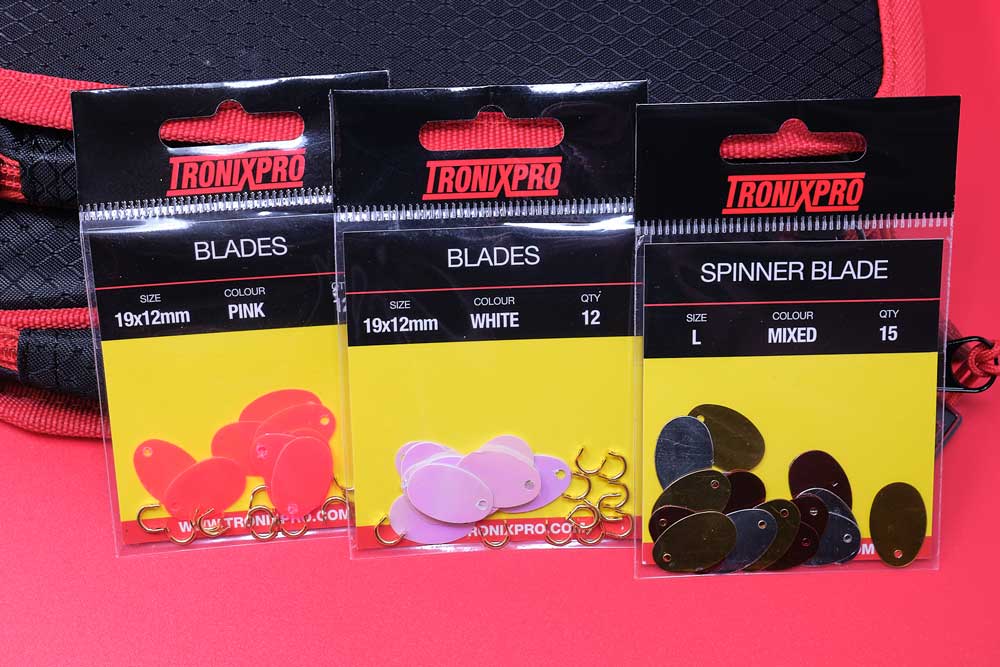
Experiment with the alternate different coloured blades and beads (silver, pearl or red blades often work well) on the day. Try mounting the beads three to eight inches above the hook by sliding on a Tronixpro Rubber Stop below the beads and adjusting this to change the distance between the beads and hook. Closer to the hook tends to work best in coloured water as an attractor. Position the beads further away from the hook in clearer water.
Flattie Spoons
Flattie spoons are typically metal, sometimes plastic, and of course spoon shaped with a swivel at each end. The swivels allow the spoon to revolve for light reflection and vibration when drift fishing from a boat, or when retrieved if you’re fishing off the shore. They are an effective attractor for all manner of bottom feeding fish including brill, turbot, rays, haddock, gurnards, codling, plaice, dabs and many more.
In all situations, tie the Tronixpro Flattie Spoon on to the hook trace by the top swivel, then add about 10-inches of 20lb AXIA Fluorocarbon line to the lower swivel. Slide on four to five alternatively coloured beads, then the hook. Experiment on the day, but in clearer water and shallow depths reduce the number of beads, but in deeper or more coloured water, use up to six or eight beads to create a bigger visual target area. Also try the spoon with no beads as sometimes fish will shy away from a length of bright beads, usually when the water is gin clear during periods of very high barometric pressure.
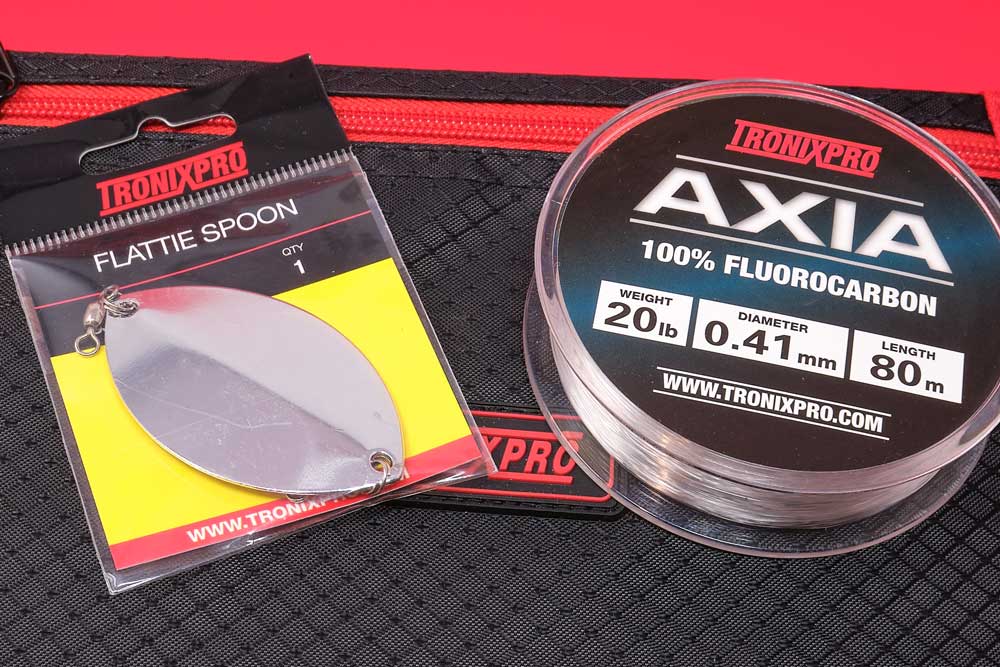
Rattle Spoons
Tronixpro Rattle Spoons do two jobs in one. They provide a colour attractor, but also vibration and noise as they have internally trapped small metal beads inside. As the spoon revolves, the beads roll around and create a sharp clicking or tapping sound. Many fish are attracted to sound, especially cod, gurnards, haddock, wrasse, turbot, brill, huss and a whole host of other species.
These are best positioned 8 to 16-inches above the hook, and trapped by either a rubber float stop or placed above a small tied on swivel with a 5mm bead in between. If the Rattle Spoon is too close to the hook, this can have an adverse effect and contribute to fewer bites, but placed as described they are highly effective, especially when drift fishing off the boat in deeper water.
Again, try a different coloured spoon on the day and faster and slower rates of retrieve. A good tip is to pay out a few feet of line, then reengage the reel to retighten the line. This sees the spoon lift and revolve and rattle, then as you release more line again it settles back and briefly rests on the seabed. This lift and fall sequence allows fish chasing the bait to catch up and eat it.
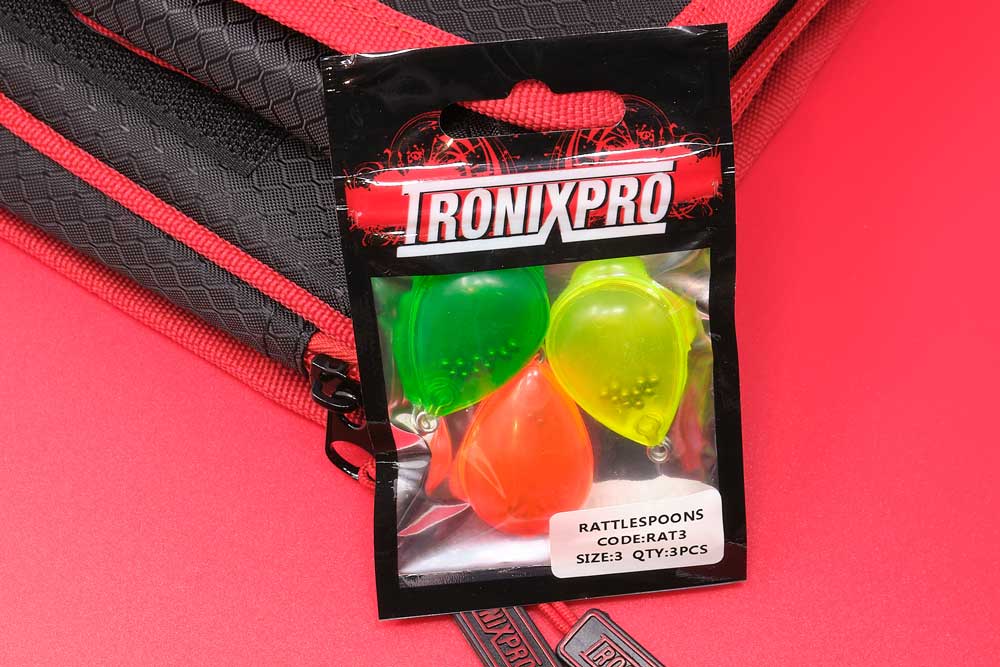
Rattle Beads
These are plastic hollow beads that fold together to form one whole bead. They are designed to take a small metal ball-bearing inside, and these have the freedom of movement to roll around and create noise and vibration.
They are best used as a double bead, two sides clipped together with the hook snood line sliding through the middle hole. The Tronixpro Double Rattle Beads already come assembled for this purpose. Stop them about 10-inches to 16-inches above the hook using a tied in swivel and bead, or a tight-fitting rubber rig stop and bead. They revolve freely on the line and give maximum noise and movement even at a low drift or retrieve speed. They also work well when added as an attractor 5-inches above a baited coloured plastic muppet lure when using a 2-hook Killer Gear rig for wreck fishing and for spurdog.
They come in different colours, so mix up the colours on the day until you find the most effective combination. They are especially good for all bottom feeding species, but also tope, rays, ling, cod, spurdog and even for sharks when added to a shark trace.
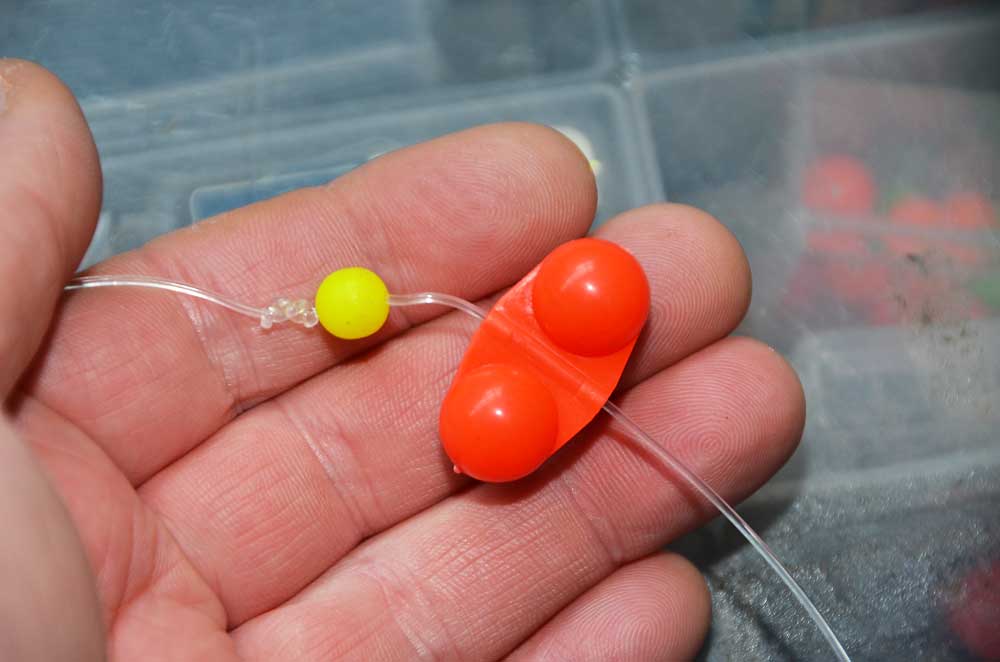
Plastic Beads
The added visual attraction of plastic beads just above the hook can stimulate fish to take a bait when bites can be slow and the fish less inclined to feed. It maybe they think a small fish is about to steal the food and this triggers the attack.
Beads are mounted free sliding on the hook trace, with the beads able to settle tight behind the hook. Use no more than six alternatively coloured beads, but if bites are not forthcoming, reduce the beads by one at a time until you do get bites. More often than not three to four beads are enough, and sometimes just one can make the difference. They work static, but added movement induced by tidal flow or the occasional twitch and lift of the rod tip can be all that’s required to get more bites.
As always, there are bead colour sequences that are better attractors on the day or for different species. For plaice, alternate black and green beads are a great first choice, then try red and white or red and yellow. Flounder like blue and white and red and white. Haddock like red and white, gurnards anything with either white or yellow in. But it’s impossible to give definitive colour combinations, and you need to swap colours around until you find the most consistent sequence on a day-to-day basis.
It's also worth trying the actual size of beads swapping from 3mm to 5mm, and when boat fishing from 5mm to 8mm.
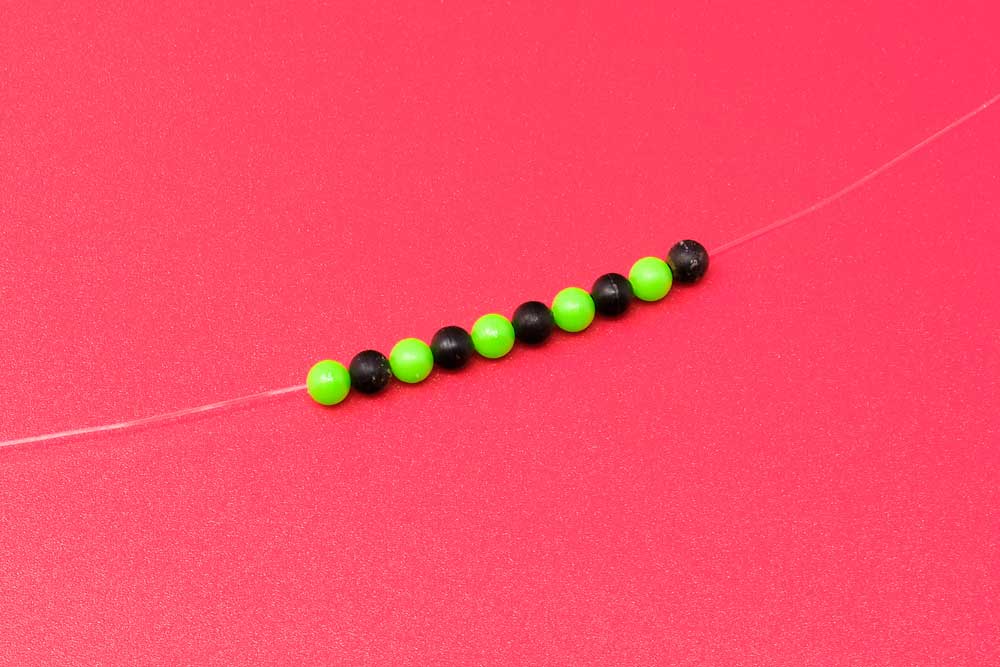
Luminous Beads
When fishing at night or in deeper water, then adding a luminous bead just above the hook is the ideal way to highlight where activity is and advertise the position of the bait for incoming fish. What we need to figure into the equation is to always aim to use the minimal amount of luminous impact. It’s easy to overdo it! Typically, one bead is enough for general shore and light boat fishing. In deeper water and in water carrying colour after a recent rough sea then two beads in size 3 to 4mm may be necessary, but rarely more.
Mount the bead free sliding above the hook on the hook trace, so it can sit directly above the bait and hook.
There are three main colours to choose from. Green, yellow and pink. The green and pink tend to be more effective attractors than the yellow.
The beads are far more effective if you charge them with a strong light source just before casting from the shore or dropping from the boat. Headlamps and phone torches will do, but the best option is a Tronixpro UV Torch. Simply shine the torch beam on the bead for 30 seconds and this will dramatically improve not only it’s overall brightness but also the duration the bead will glow for, extending it by some considerable time.
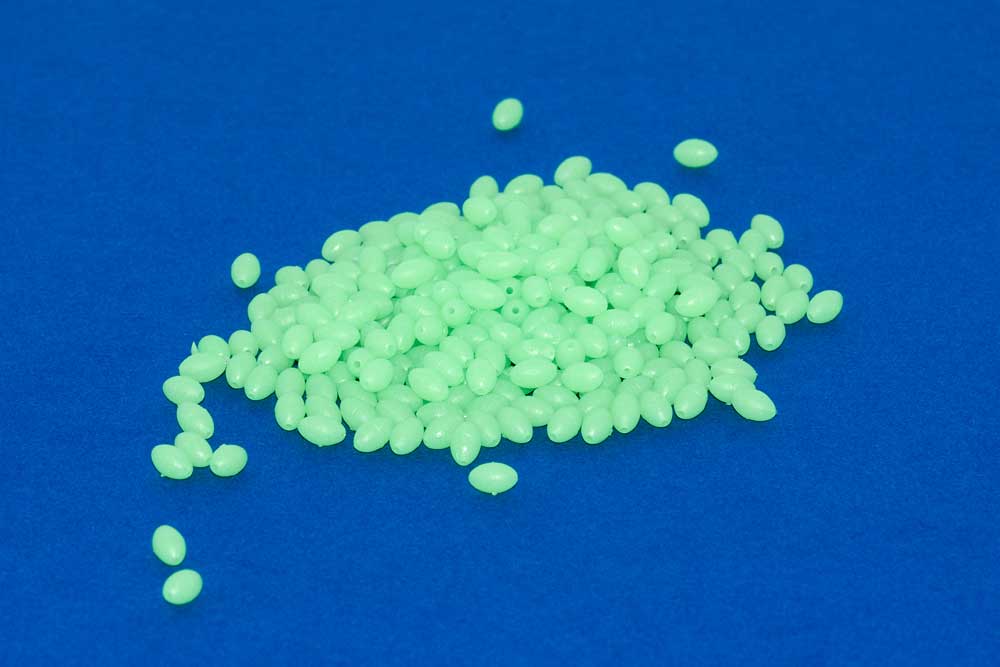
Luminous Tubing
The use of Tronixpro Luminous Tubing is much the same as for luminous beads. It’s best used in short sections up to a centimetre in length just above the hook. It’s also ideal for sliding a short section on to the shank of a lure, pirk, pilk or spinners treble hook as it adds a hot spot attractor where the hook is for the attacking fish to home in on.
It can also be used in longer sections above baited hooks, but this can have a negative effect on bites and make fish more cautious in approaching the bait if overdone. It’s something to try, though, when all else fails.
Again, use the Tronixpro UV Torch to stimulate the luminous activity before casting out or dropping the rig to the seabed.
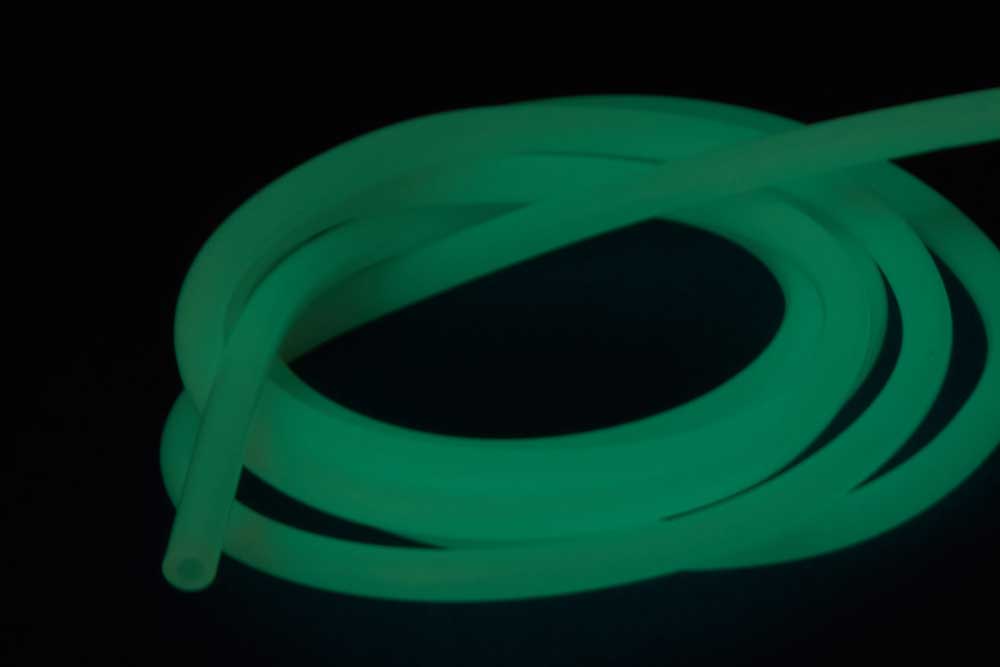
Glow Balls
Tronixpro Glow Balls offer something different when it comes to attractors. These are an 8mm luminous soft round bead with buoyancy. They come in five colours, a light green, blue, yellow, pink and white. In daylight, the colours look normal, but at night the luminosity powers out, especially if you charge the beads by shining the Tronixpro UV torch at them for a few seconds.
These attractor balls are designed to be slid directly over the hook point and onto the hook length. Being a soft material, they grip the hook length line tightly, but are easy to move up and down above the hook for repositioning. This also allows them the versatility to be simply added or taken off at will without removing the hook. This makes it easy for colour experimentation regarding how effective the individual colours are working on the day. Also, worth noting is that you can mix two different colours. This can work well at night or in water carrying some suspended sediment. Try green and yellow, pink and white, and blue and white for basic combinations.
One of these beads has enough buoyancy to lift smaller maddie rag baits, small slivers of mackerel or squid, small chunks of lug, or two or three crab legs. They are especially effective for garfish, flatfish, golden grey mullet, smelt and bream.
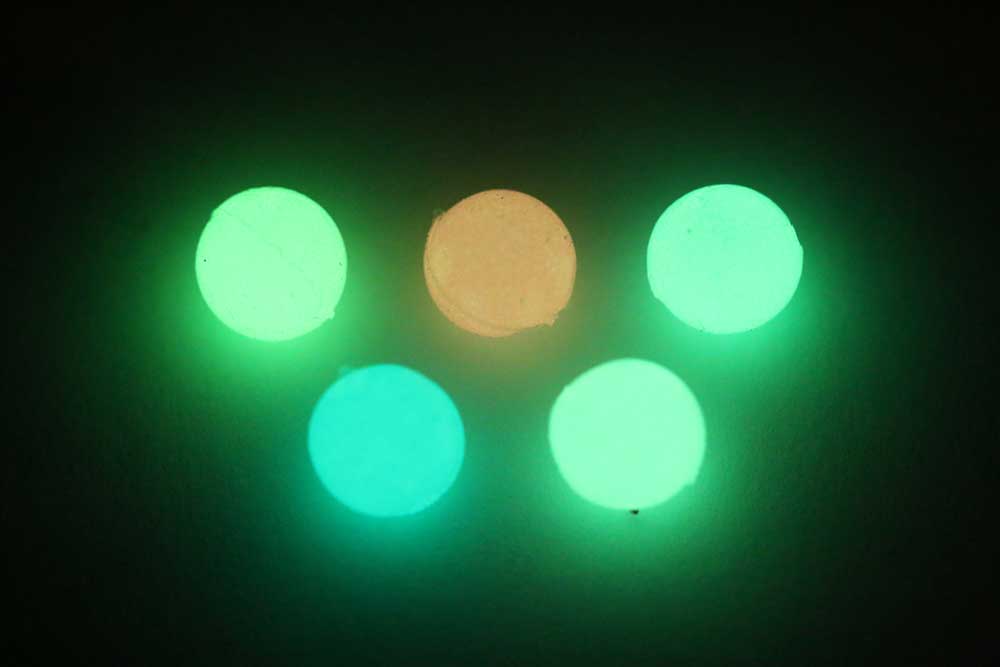
UV Torches
A bonus tip is to not underestimate the usefulness of the Tronixpro UV Torch, the investment will pay dividends, giving any kind of luminous attractor a massive boost in brightness and duration. They can be used on all luminous items, from beads and tubing to muppets and other plastic lures.
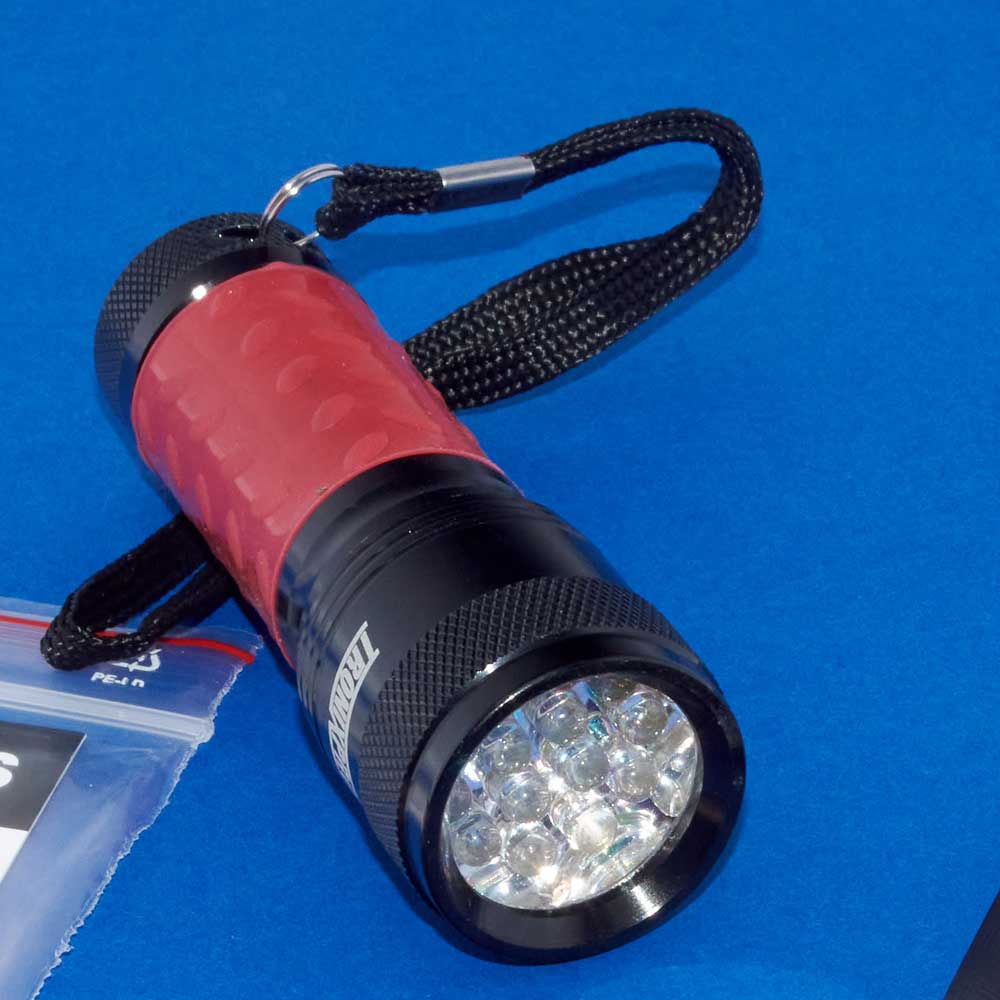
You might wonder why we haven’t mentioned Pop-Ups in this blog, we think the use of Pop-Ups is worthy of its own separate blog, and we’ll be posting that very soon!


